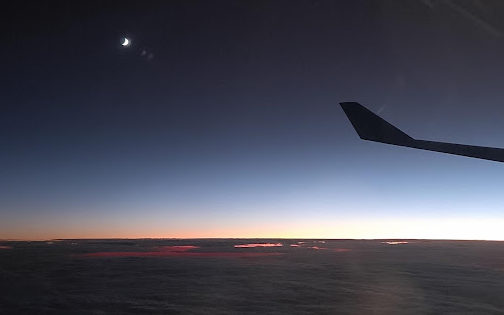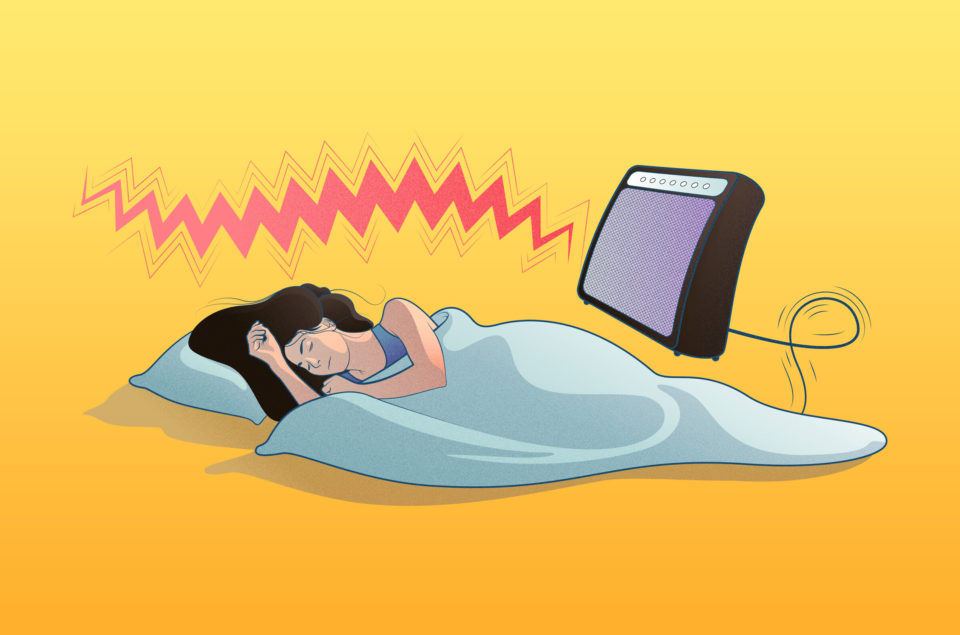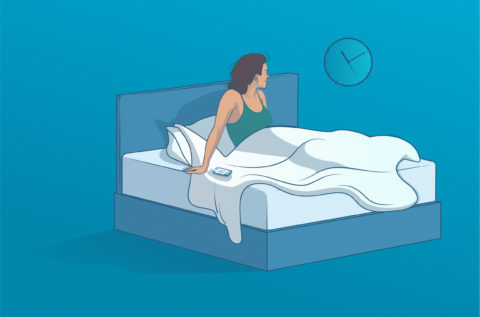Welcome to Sleep Cycle’s final blog in our four-part series on melatonin. For this fourth and final part in our series, Mike will walk us through how melatonin can be used to lessen the impact of jet lag, and take you – literally – along for his recent ride from Australia to Sweden.
Table of contents:
- What is jet lag?
- How to use melatonin for jet lag?
- The 3-Step melatonin plan for jet lag
- Step One: Take melatonin before takeoff
- Step Two: Take melatonin on the plane
- Step Three: Take melatonin at your destination until …
- The results
- Taking melatonin when travelling east

What is jet lag?
We each have a circadian rhythm that cycles for about 24 hours, and it typically works well for us as it usually helps us stay awake during the day and sleep at night. But that’s when you’re in your own time zone. When you travel across multiple time zones, the timing of your circadian rhythm can become seriously out of sync at your destination.
Take my recent example of flying from my home in Adelaide, Australia, to the Sleep Cycle HQ in Sweden. Timewise, Adelaide was ahead of Sweden by 7.5 hours. This means working hours of 9-to-5 in Sweden would equate to 4:30 p.m. to 12:30 p.m. in Australia. I’m a self-confessed night owl, so these times aren’t too bad for me. However, when in Sweden, I didn’t want to go to sleep straight after work, only to wake up in the wee hours of the night (say 2 a.m.).
Fortunately, I studied circadian rhythms for my PhD in the early 2000s, and simultaneously treated people with circadian rhythm issues, such as delayed sleep, advanced sleep, shift work and so on. On average, we can shift our circadian rhythms by about 30 minutes each day. This means you need to begin the process before you get on a plane. That’s step 1 in our 3-step jet lag plan. But first …
How to use melatonin for jet lag?

In our previous melatonin blogs, you’ve learned about its use for sleep and other conditions. However, when it comes to using melatonin for changing your circadian rhythm, you need to use it differently. Especially when it comes to minimizing jet lag. Doing so would help me stay awake longer in the evening, and instead of waking up at 2 a.m. and unable to fall back asleep, I’d hopefully be waking up at a more normal time (say for the hotel’s morning breakfast smorgåsbord at 6 a.m.).
The 3-Step melatonin plan for jet lag
So here are the steps I took to delay my circadian rhythm using melatonin.
Step One: Take melatonin before takeoff
You can start changing the timing of your circadian rhythm three days before departure to minimize jet lag. I chose to start four days before taking off. So, four days before my departure, I took melatonin when I woke up in the morning. The dose of melatonin in the mornings signalled to my circadian rhythm that it was still time for sleep.
Because melatonin levels can decrease due to bright light, movement and eating, I stayed in bed, in darkness, for as long as practically possible – before getting up and having breakfast. Each consecutive morning, I then delayed the melatonin intake in later time increments, thus signalling to my circadian rhythm to start the day at a later and later time.
In an ideal world, this would delay my circadian rhythm by around two hours before I got on the plane to Sweden – which is a great head start. It actually meant my circadian timing was closer to Perth than Adelaide. Because most people don’t deal with their jet lag until they arrive at their destination, this is a great way to make the most out of your time at your destination. Whether it’s for work or for play.
Step Two: Take melatonin on the plane
When it comes to taking melatonin on the plane, you need to know what time you last took it. This means you need to keep track of the time from your departure city. In my case, I ensured I had Adelaide as one of my cities in my ‘world clock’ app on my phone. And because there can often be distractions on the plane, I ensured that I set an alarm to take my melatonin on the plane.
Fortunately, as your movement is restricted on a plane, you can somewhat simulate what you previously did in your bedroom. But unfortunately, you cannot control the lighting on the plane. So ensure you pack a sleep mask to keep the light out of your eyes.
As for eating, this is up to you. On long haul flights, food can help to break up boredom and pass the time. If your meal arrives around the time you’ve just taken melatonin, ideally, see if you can either delay eating your meal, or if you cannot wait, eat lightly and/or slowly.

But if your flight schedule means that you don’t get a chance to take melatonin on the plane because you’ve already arrived at your destination – or an airport – then, to be honest, that day’s jetlag plan is probably a little stuffed, because you cannot lie down. Sunglasses or blue-blocking glasses won’t offset the suppression of melatonin that occurs from you walking.
For my recent trip, I was on a flight in between Perth and Doha when I needed to take my melatonin. I was able to stay still for a while, but the lights began turning on and breakfast did arrive. So I accepted my breakfast, but let it sit – and then, at the risk of looking slightly out of place, I pulled my beanie over my eyes and stayed that way for about 30 minutes before I was tempted to eat.
The next time I needed to take melatonin was my first morning in Sweden.
Step Three: Take melatonin at your destination until …
You can expect your first night’s sleep at your destination after a long haul flight to be OK. That’s assuming you haven’t met your usual sleep needs and/or sleep quality (sleeping on a plane will do that to you). This will most likely mean that your body has been building up pressure to sleep.
However, your first night’s sleep at your destination may not be indicative of the second night’s sleep at your destination. Regardless, ensure before you go to bed each night that you have your melatonin and some water next to your bedside. You’ll need it when you wake early and cannot get back to sleep.
Each successive morning, try to take your melatonin gradually later than the previous morning. If you wake up before you should take melatonin, just wait in the darkness until it’s time to take it.
And if you sleep past the time you should take it – great. Never set an alarm to take melatonin when you arrive at your destination. The plan is to gradually wake-up later and later, until it’s a time on the clock that’s reasonable for you to begin your day.
The results of taking melatonin for jet lag
On my first morning in Sweden, I woke up at 3.30 a.m., which was better than 2:00 a.m. (this happened the first time I travelled to Europe and didn’t know so much about minimizing jet lag).
On the second morning, I woke up around 3.45 a.m. On the third morning, I woke up at 4.30 a.m., the fourth at 5.30 a.m. and the fifth morning at 6 a.m. Once my body had adjusted to a 6 a.m. wake-up, I stopped taking the melatonin as this was my wake-up goal (nicely coinciding with the hotel’s opening time for breakfast.)
With regards to my workdays, I felt awake, energetic, sharp and creative. Exactly what I needed for some highly productive work with my Sleep Cycle family.

Taking melatonin when travelling east
As a refresher – when I was travelling westward I needed to delay my circadian rhythm. Taking melatonin in the morning helped me delay my rhythm.
When travelling eastward, you need to do the opposite. You need to adjust your circadian rhythm to an earlier time. As such, you need to take melatonin in the evening. And in earlier increments for several consecutive days.
As I write this blog, I’m currently flying over India, and heading back to Australia. I began taking melatonin in the evenings a few days before leaving Sweden. And I’ve got Stockholm’s time added to my list of cities in my ‘world clock’ app on my phone.
So I’ve gradually been taking melatonin earlier, and trying my best to control my environment when I do (eg, wearing my new Sleep Cycle sleep mask). And feeling fairly reassured that I won’t suffer the dreaded jet lag upon my return.

If you’ve enjoyed this final installment of our melatonin series, check out our earlier posts on the subjects here:










